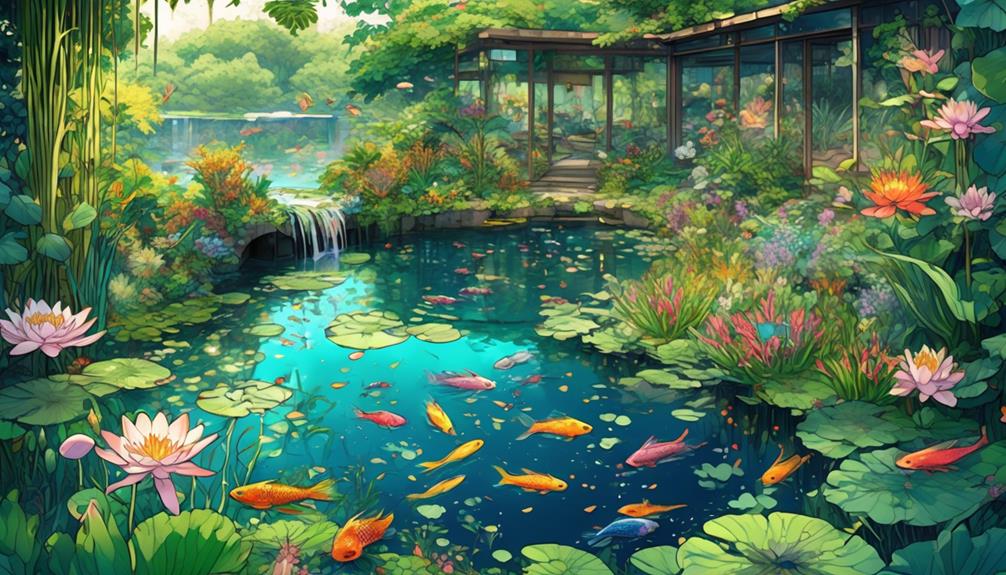Permaculture ponds are like hidden gems in the landscape, quietly shimmering with the potential to transform our relationship with water and the environment. These ponds hold within them the power to restore ecosystems, enhance agricultural productivity, and mitigate the impacts of climate change.
But what exactly makes them so remarkable? How do they work their magic? And how can we tap into their potential to create a more sustainable future?
In this discussion, we will explore the untapped power of permaculture ponds, uncover their secrets, and reveal the multitude of benefits they offer.
Permaculture Ponds
- Permaculture ponds have multiple benefits, including slowing down water flow, improving water quality, enhancing biodiversity, and increasing resilience to climate change.
- There are different types of ponds, such as infiltration ponds, irrigation ponds, recreational ponds, fire control ponds, and habitat ponds, each serving specific purposes.
- When designing a permaculture pond, it is important to consider factors like pond placement, storage efficiency, accessibility for maintenance, integration with the overall design, and the size and shape of the pond.
- Pond construction techniques include excavation, installation of liners or clay sealing, construction of inlet and outlet structures, and the establishment of proper water depth.
Purpose and Benefits of Permaculture Ponds
Permaculture ponds unleash their power by providing a multitude of benefits and serving various purposes within the ecosystem. These ponds aren’t just bodies of water; they’re essential tools for water conservation and ecological restoration.
By slowing down water flow and promoting water infiltration in the landscape, permaculture ponds help increase groundwater levels and recharge aquifers. They also act as natural filters, improving water quality and restoring springs.
Additionally, permaculture ponds provide habitat for aquatic plants, birds, and fish, enhancing biodiversity and ecological balance.
These ponds play a crucial role in water management and conservation, increasing resilience to climate change. Through their holistic design and practical functions, permaculture ponds contribute to creating a sense of belonging within the ecosystem.
Types of Ponds
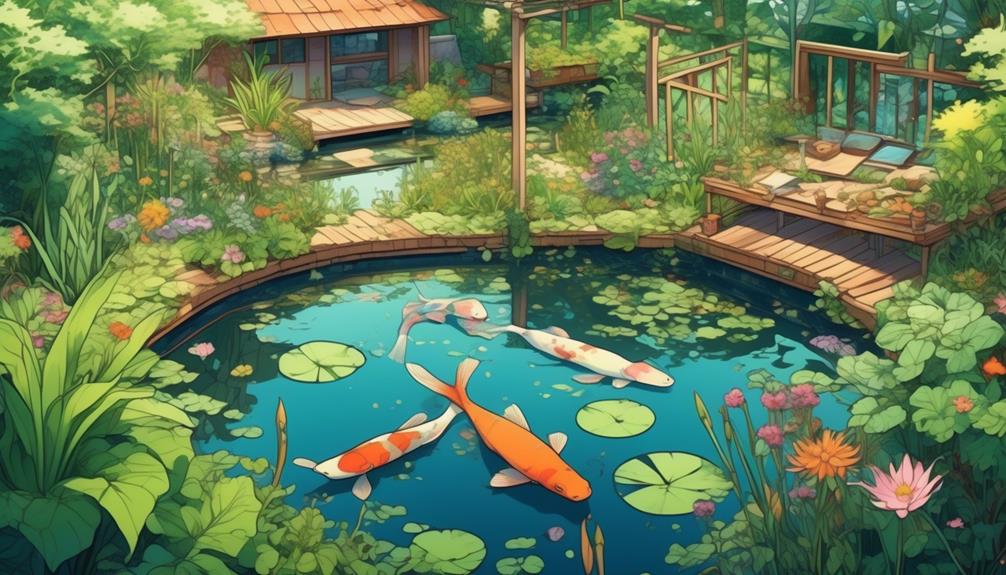
There are various types of ponds that can be incorporated into a permaculture system to serve different purposes and functions. These include:
- Infiltration ponds: designed to filter water and promote infiltration into the soil, helping to improve water quality and recharge aquifers.
- Irrigation ponds: used to collect rainwater for crop irrigation, ensuring a sustainable water supply for plants.
- Recreational ponds: maintained for swimming and entertainment purposes, creating a space for relaxation and enjoyment.
- Habitat ponds: created to support diverse aquatic habitats and wildlife, enhancing biodiversity and ecological balance within the permaculture system.
When designing ponds, it’s important to consider their placement, size, shape, soil type, and water source. Additionally, proper pond management involves incorporating native plants for water filtration, introducing fish for pest control, monitoring water quality parameters, and cleaning and maintaining the pond to ensure its functionality and integration with the overall permaculture system.
Considerations for Pond Placement and Design
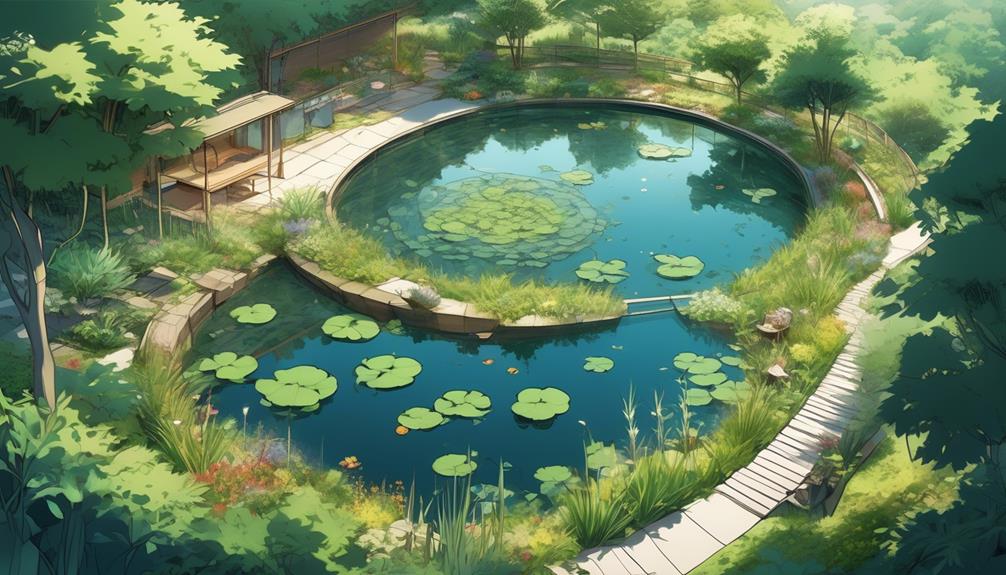
When incorporating ponds into a permaculture system, careful consideration should be given to their placement and design in order to maximize their functionality and integration with the surrounding landscape.
Pond location and design integration are key factors to ensure the success of the permaculture pond. Here are some important considerations for pond placement and design:
| Considerations | Details |
|---|---|
| Location on the slope | Higher positions allow for gravity-fed water supply, while lower positions may have better soil conditions. |
| Storage efficiency | The amount of water that can be stored depends on the size of the excavation and soil characteristics. |
| Relationship to the landscape | Ponds should be strategically placed to receive runoff from the surrounding area or be filled from a reliable water source. |
| Accessibility for maintenance | Ponds should be easily accessible for cleaning, repairs, and harvesting. |
| Integration with the overall design | Ponds should be incorporated into the permaculture system and serve multiple functions. |
Pond Construction Techniques
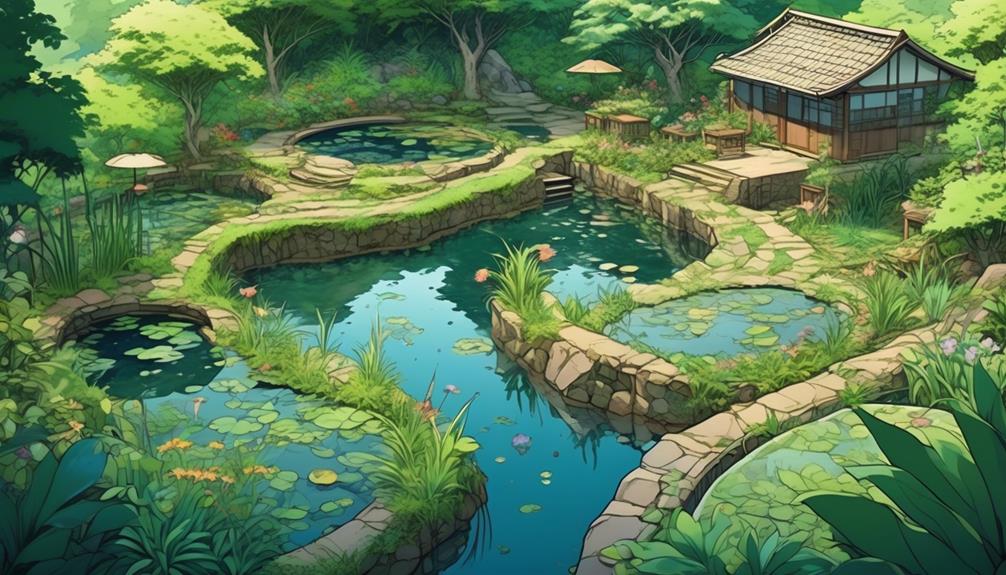
To construct a permaculture pond, various techniques are employed, including excavation, sealing, and the establishment of inlet and outlet structures.
Here are four essential steps to consider when building a pond:
Pond Excavation:
Careful planning and excavation are crucial to create the desired size and shape of the pond. This process involves digging the soil to the desired depth and slope.
Liner Installation:
To prevent water leakage, a liner is installed in the excavated area. Liners can be made of clay or synthetic materials like rubber or PVC.
Inlet and Outlet Structures:
Inlets allow water to enter the pond, while outlets regulate the water level and flow. These structures ensure proper circulation and prevent flooding.
Shelves and Planting Zones:
Incorporating shelves and planting zones in the pond design provides different water depths and habitats for aquatic plants, promoting biodiversity and ecological balance.
Vegetation, Wildlife, and Maintenance of Permaculture Ponds
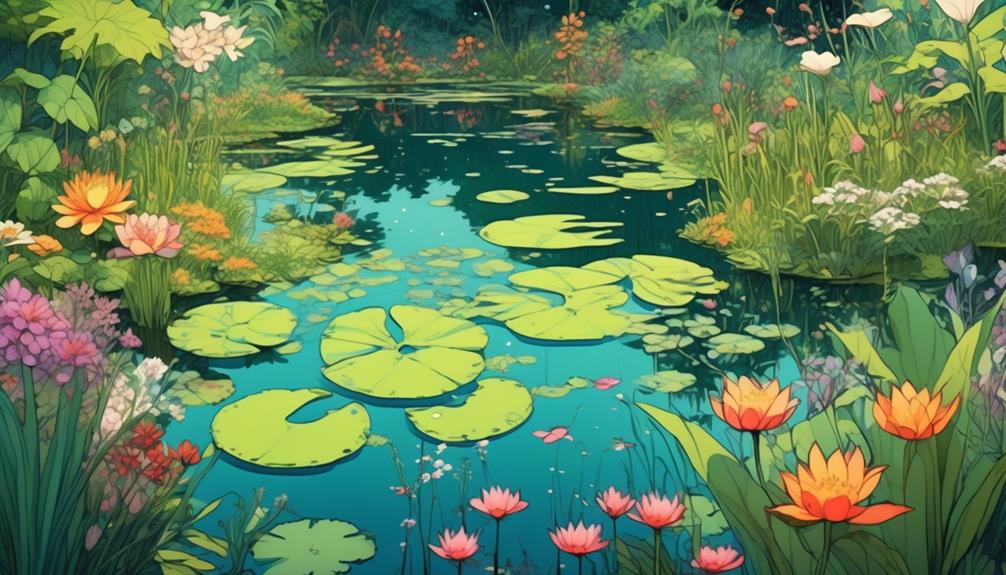
The vegetation, wildlife, and maintenance of permaculture ponds play a vital role in supporting a thriving ecosystem and ensuring long-term sustainability.
By attracting biodiversity and implementing effective pond ecosystem management, permaculturists can create a balanced and self-sustaining habitat.
Native plants are carefully selected for their ability to filter water, while the introduction of fish helps control pests and cycle nutrients. These ponds also attract beneficial insects and birds, creating diverse microhabitats.
To maintain the health of the pond, regular monitoring of water quality parameters is necessary. Invasive species and pests should be controlled, and excess vegetation should be regularly cleaned and removed. Additionally, managing water levels and nutrient inputs ensures the pond’s integration with the overall permaculture system.
Balancing Nature
Permaculture ponds offer a powerful solution for sustainable land & water management.
Their ability to slow water flow, improve water quality, and promote biodiversity is truly remarkable. By harnessing the natural processes of filtration and habitat creation, these ponds provide a holistic and practical approach to land restoration.
With their potential to enhance resilience to climate change and create a more sustainable future, permaculture ponds truly unleash the power of nature’s balance.
